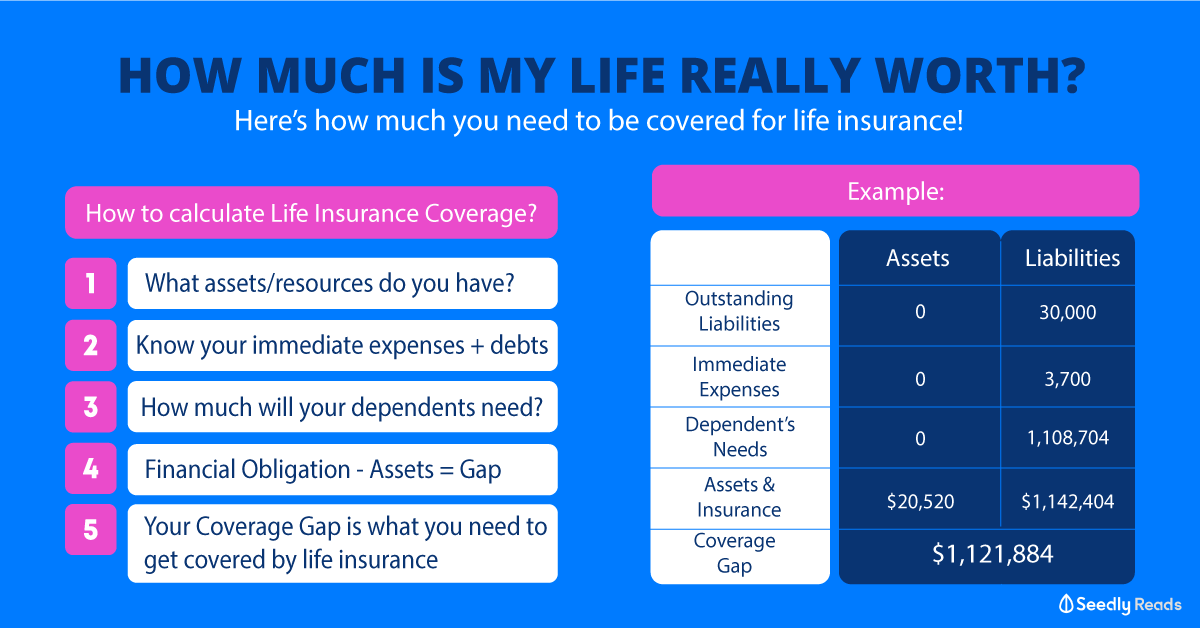Advertisement
Anonymous
At what life stage do you think the review of the insurance coverage will be almost finalized? I always think the coverage is inadequate and after getting the new insurance, I feel i'm overinsured. Any thoughts?
I bought my 1st whole life policy at age 21. Subsequently my friend introduced term policy which make sense at age 25 since the whole life policy insured amount is only 80K which is inadequate. The whole life policy will serve as legacy planning tool. At age 30, i was offered a saving and term policy with annual premium of 6K. 2 yrs ago, I was offered multi pay CI policy at 3K with precondition. The total premium is almost 12K annually. How do one assess the sufficient of coverage independently?
7
Discussion (7)
Learn how to style your text
Pang Zhe Liang
21 Jun 2020
Lead of Research & Solutions at Havend Pte Ltd
Reply
Save
Elijah Lee
20 Jun 2020
Senior Financial Services Manager at Phillip Securities (Jurong East)
Hi anon,
To know if you are over or under insured, know how much you need first based on your own needs.
Generally if you don't have dependents or liabilities, you won't need death/TPD cover. But if you do, then you must have enough to cover those. Examples include your mortgage, money that the family needs for living, etc. Another rule of thumb people use is 10x of their annual income.
For critical illness, I tend to use 5 times of annual expenses plus a sum for out of pocket expenses. Based on this, you should be able to calculate an approximation of how much coverage you need. Take these figures and compare it against what you have. Then you'll know if you are over or underinsured (you won't get an exact figure, but close enough is good enough). Having a little more coverage will help to hedge for inflation in future as well.
Next, you need to also check affordability. Generally you should not have to spend more than 10% of your income on your coverage. This excludes savings plans as those are not meant for protection. I note that you have conditions imposed on your multipay, so it might not be possible to be within the 10% guideline.
With these figures you will be able to have a rough gauge of whether your situation is okay.
Reply
Save
Read 3 other comments with a Seedly account
You will also enjoy exclusive benefits and get access to members only features.
Sign up or login with an email here
Write your thoughts
Related Articles
Related Posts
Related Products

FWD Term Life Plus Insurance
4.8
9 Reviews
FWD Term Life Plus Insurance (Renewable Term)
$1,500,000
MAX SUM ASSURED
5 years
PREMIUM TERM
Death, Terminal Illness
COVERAGE

Tiq DIRECT - Etiqa Term Life Insurance
4.3
3 Reviews

Great Eastern GoGreat Term Life Insurance
5.0
1 Reviews
Related Posts
Advertisement








Insurance Portfolio Summary
Firstly, one of the most important things to do is to have a complete understanding of your existing insurance portfolio. Through this process, it allows us to understand the coverage that we have, any financial gap, as well as to find out whether we are overpaying for our insurance policies.
Key Reasons Why:
Why Every Client needs an Insurance Policy Summary
Comprehensive Financial Planning
Next, we should spend quality time to plan for your future. For instance, some of the major events in our lives will be similar, e.g. marriage, house, family, children's education, and retirement. At the core of all these events will be your health.
With this in mind, create multiple goals in your life and do a detailed calculation to that end. Through this process, it gives us a better understanding on how much money we need, and how much life insurance we should have.
Regular Financial Portfolio Review
I don't know about the usual practice outside, but typically I meet my clients at least once every 6 months. During each meeting, we will review through the situation to determine whether we need to make any adjustment to the portfolio.
More Details:
The Importance for a Semi-Annual Financial Portfolio Review
Above all, there is no perfect formula as to when the insurance portfolio can be finalised. This is because things are changing constantly and the only way to remain constant is to change. Therefore, regular reviews and working with a trusted consultant is important to this end.
Finally, here is a general guideline on how much insurance you should have.
10% to 20% of your annual income on healthcare insurance and life insurance
Basic Life Cover = 10 times your annual income
Critical Illness Coverage = 5 times your annual income
But before you get more insurance coverage, please review your existing insurance polices first. This is to ensure that you are not overinsured, or have insurance policies that are not optimised, e.g. overlapping.
I share quality content on estate planning and financial planning here.